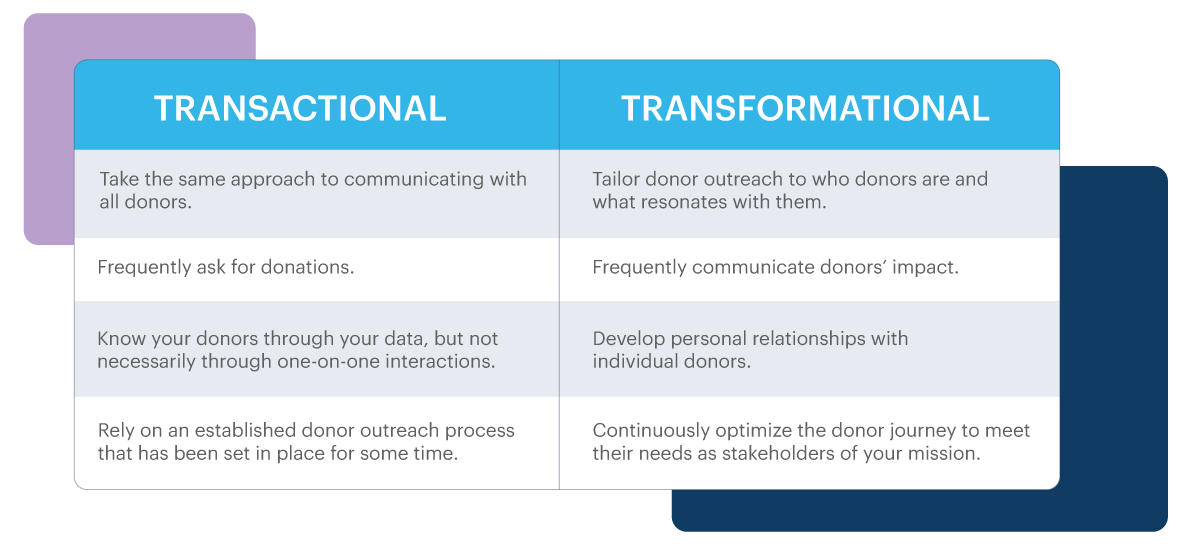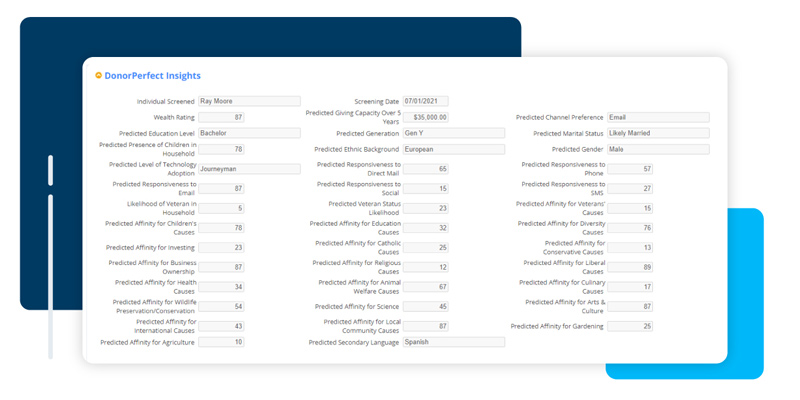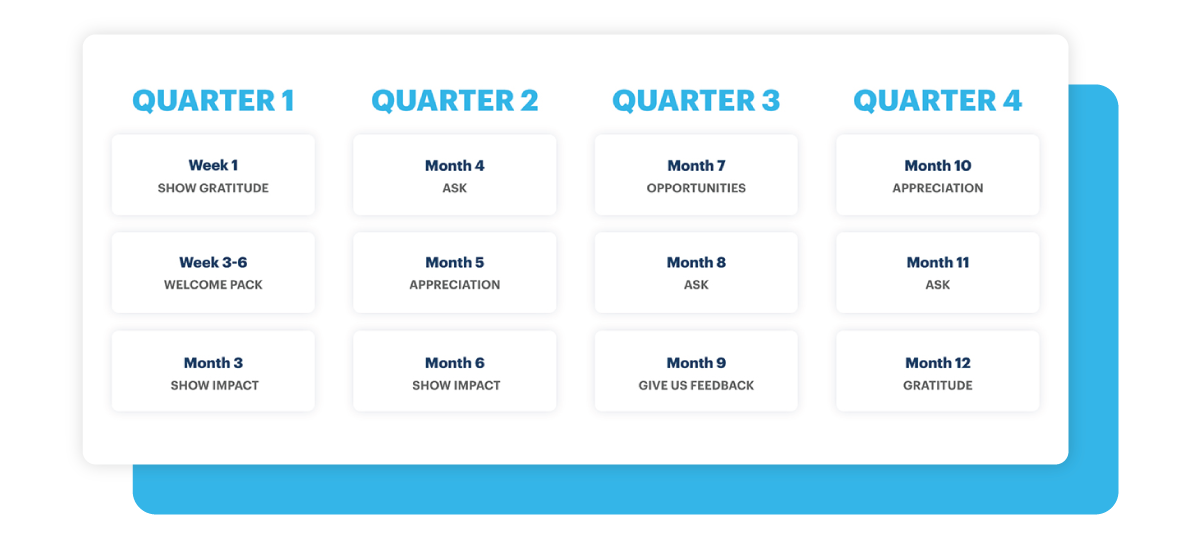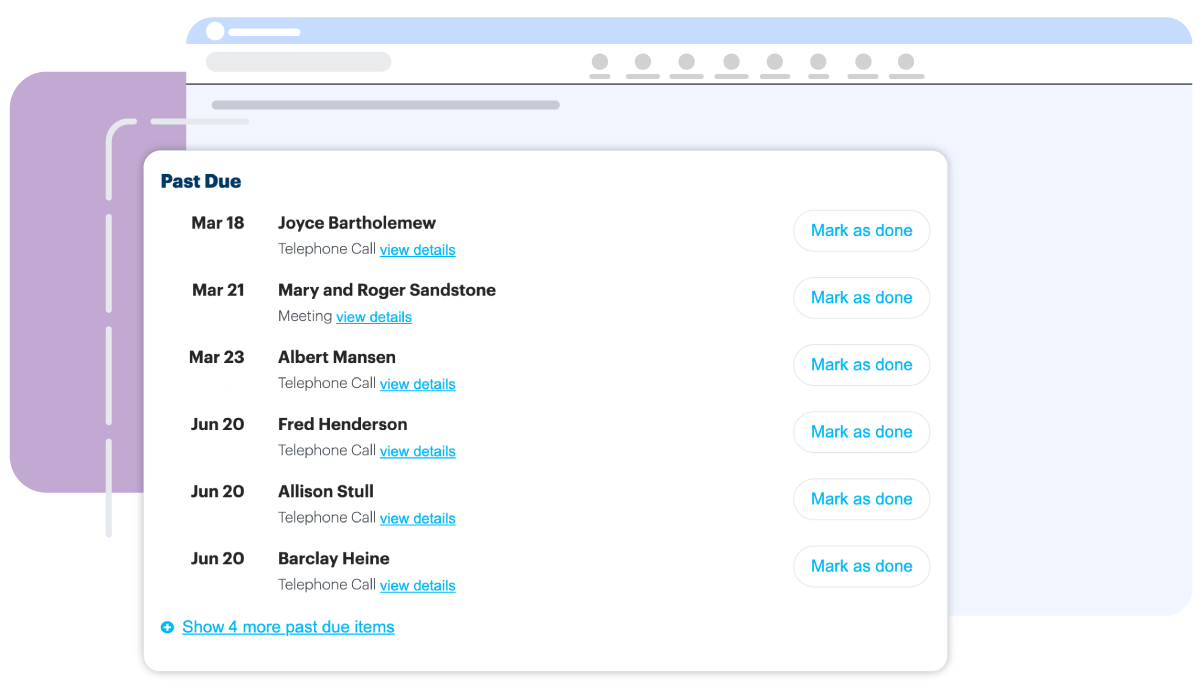Nonprofit Technology & Fundraising Blog
Subscribe to our mailing list
July 27, 2021 |

As many donors become increasingly beholden to causes over individual organizations, nonprofits can no longer lean on catchall approaches to engagement. In an ever-personalized world, donors want more than the momentary fuzzy feeling of making a donation. They want a personal relationship with the people in your community and with the progress they make possible by supporting you.
They don’t just desire a relationship with your organization, they require it. And that’s because they need to know that their individual investment in your work, their presence at your fundraising events and volunteer days, and their enthusiastic sharing of your social media posts is something that’s really creating an impact on the causes they care about most.
You’re already an expert in creating positive change for the communities you serve. Now it’s time to change the ways you rally your donor community to act as the partners in progress they really are. The answer? Transformational fundraising.
Is it worth your time to evaluate how you approach donor engagement? To show you just how “transformational” this approach truly is, let’s look at a breakdown of this buzzy terminology:

With all the hats you and your staff members wear on any given day, it’s completely understandable if you’re currently leaning on the transactional fundraising model. The good news is, taking the steps to transform your fundraising strategy isn’t a monumental effort. Sure, it’s a little bit of work upfront but the time you take to pursue the following steps will pay off big time in the long run.
In order to excel at transformational fundraising, you need to break your donor community into segments defined by attributes like interests, prior engagement, and giving capacity. But you can’t develop donor segments if you don’t know who your donors are. With tools like DonorPerfect Insights, you can delve into the individual people who make up the community supporting your cause by uncovering personal traits like:

Once you have this data, you’re equipped to create donor personas that can help you better segment and engage different types of donors in your community.
When you communicate to all of your donors as if their interests, giving capacity, and motivations to give are the same, you can bet that your message will be lost on many of them. Developing donor segments can help you determine groups of donors within your community so you can take your campaign messaging and tweak it according to the types of donors you’re trying to reach.
Donor segments might be based on:
Plan your donor outreach with examples of how you’d communicate to each persona. Sometimes this will mean doubling down on communication for a campaign to one donor group and sometimes it will mean inviting everyone to join in, but extending the invite in a way that complements specific donors. Let’s explore the differences when looking at this donor timeline from The Donor Retention Toolkit.
EXAMPLE DONOR TIMELINE

Let’s say you’re a Development Director for an animal shelter. What does showing impact look like for your donor segments? This is where a multichannel fundraising strategy can come into play.
For your digital-savvy donors, an email or a text message with a heartfelt thank you will do. For your donors who appreciate an extra-personal touch, send a thank-you letter via snail mail or recruit a staff member to make a phone call. And no matter who you’re sharing impact with, always include a photo that shows the awesome progress they helped create.
From your new donor engagement strategy to your volunteer outreach, understanding who you’re talking to and tailoring the outreach appropriately (from channel to word choice) can help maximize your results.
Let technology bear the burden of data entry so you can focus more of your attention on the quality of your engagement and fine-tune your fundraising strategies. Some of the tasks that tech can take over include:

Transformational fundraising is just that – always transforming based on donors’ needs. Lean on your data to let you know:
When you take the time to develop a more personalized strategy in reaching your donors, it shows, and donors will appreciate the effort. When it comes down to it, understanding your donors’ motivations to give will go a long way in how you resonate with them.
Follow us on social!